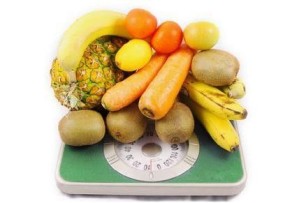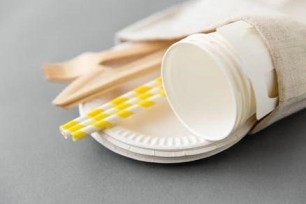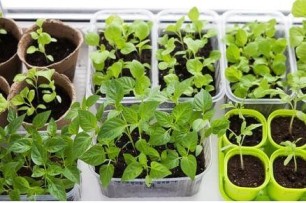General Insurance Blogs, Articles & Updates by - Magma HDI
Have us call you
- RENEW YOUR POLICY
- BUY NEW POLICY

Six habits of successful weight watchers
If you want to reduce weight, you may be considering a complete lifestyle change. Remove chocolate from your diet, avoid alcohol, quit eating sweets, say goodbye to junk food, begin running 10 kilometres every day and so on. Wait! The list is endless and, while it sounds like a foolproof strategy to lose weight, it isn't easy to follow.
So, what is that unique, the successful weight watchers do to reduce weight? They work on an alternative way to cultivate healthy habits. Here are six habits that can help you reach your healthiest weight.
1. Hydration:
The brain frequently misinterprets thirst, which is triggered by minor dehydration, for hunger. Even slight dehydration might cause your metabolism to slow down and function inefficiently. Don't reach out for a snack, instead find a tap and drink some water next time you feel that hunger calls frequently.
2. Don't skip meals:
Especially breakfast, you'll rarely see successful weight watchers skip breakfast. Skipping meals is a bad idea in general since it means you'll be hungry later. And, when you're hungry like that, you're more likely to overeat.
3. Mindful eating:
The idea of mindless eating is familiar to most of us. Whenever we're sitting in front of the television or browsing through our phones, this is what we do. However, when you focus on what you're eating without interruptions, you create a healthier connection with food, lose extra weight, and are more likely to keep it off.
4. Intake more fibre:
Fibre doesn't have any unique fat-burning qualities. It just makes you feel full without adding too many calories to your daily diet. For example, if you eat a baked potato instead of a bag of potato chips, you'll consume fewer calories and be less hungry an hour later.
5. Caloric awareness:
Simple math, to lose weight, you must consume fewer calories than you spend. Figure out your caloric intake and try to meet the demand with nutrient-rich, minimally processed food. Wholesome foods and healthy fatty foods are great choices. Snacking now and then won't hurt; try to be aware of the foods you consume, and as long as you're in your maintenance calorie level, you're good.
6. Exercise regularly:
Hitting the gym, swimming laps in a pool, dancing, and running are the possibilities. Find a workout that you like and adhere to it. Adding various forms of exercise will keep you engaged. Aim for 10,000 steps every day. Take stairs instead of the lift whenever you can. Just keep your heart rate up every day one way or the other.
Be patient with your new habits. Weight management is a journey that all weight watchers should enjoy. What worked for others may not work for you; follow these six habits and add your mix to it. Find the right combination, and then be consistent.
Losing weight leads to a healthy lifestyle as it increases your productivity and efficiency at work and keeps you motivated throughout the day. In addition, it reduces your medical bills, healthcare costs and premium for your health insurance plan. Many insurance companies encourage healthy individuals with affordable health insurance plans.
Click HERE to know about affordable health insurance plans.
Disclaimer: The information provided above is for illustrative purposes only. To get more details, please refer to policy wordings and prospectus before purchasing a policy.

Things to know while recovering from a dog bite
Although most dogs are friendly and offer infinite affection to the humans around them, sometimes even the most gentle and cute puppies can snap under specific conditions. Hence, intentionally or unintentionally, many people are hurt by dog bites. In either case, there are immediate measures you must take to treat the wound and limit the danger of infection.
If you are bitten by a dog, the frontal teeth will grasp and squeeze your tissue, and the smaller teeth might shred it. The outcome is a piercing, gaping wound. When an injury becomes infected, the consequences are typically severe. Therefore, medical assistance on the same day is necessary. Remember that your health insurance will ease the whole medical process and keep you from unnecessary expenses in financial aid requirements.
Continue reading to discover what to do and how to avoid infection if a dog has bitten you.
1. Assist with first aid:
. Clean the area with lukewarm water and soap if your skin isn't damaged. As a precaution, apply an antimicrobial cream or antibacterial ointment to the affected region. If you have damaged skin, gently pat the wound with warm water and soap to encourage a tiny bit of bleeding. This will assist in the removal of bacteria. Then, bandage the wound properly and visit the doctor if you suspect an infection or exposure to rabies.
2. Inquire about the dog's vaccination record:
If the dog's owner is around, inquire about the dog's immunization history. If the dog is alone, see if anybody who observed the incident knows about the owner.
3. Inspect the bite frequently:
If the bite is infected, it might turn red, bloated, and heated to the touch. You may experience discomfort or develop a fever, in which case, it is advisable to visit a doctor.
4. When should you seek medical attention:
Visit the hospital if you haven't got your latest tetanus shot, if you feel weak, dizzy, faint, or if you develop a fever.
Besides that, other reasons you should see a doctor are if the wound:
• Bleeds uncontrollably
• Causes a great deal of discomfort
• Appears inflamed, puffy, or red
• Causes movement loss, such as difficulty in flexing fingers.
5. Do you really require rabies vaccination:
If the dog that bit you is acting strangely or foaming at the mouth, you should take a rabies vaccine. Getting a rabies post-exposure vaccination makes sense if you or your doctor have concerns that you may have caught rabies from the bite. Because of widespread immunization and preventive initiatives, rabies is uncommon, and dogs seldom transmit it.
Your most excellent defence against dog bites and related repercussions is to vaccinate your dog for rabies and keep away from unfamiliar dogs. No matter how cute a dog appears, never approach one you don't know. Dog bites are frightening, and if left untreated, they can lead to significant consequences.
Therefore, you should check any symptoms of infection straight away. Take the medication as prescribed. Consult your doctor if you take longer than expected to recover from your injury. Keeping your health insurance policy up-to-date is crucial to receiving uninterrupted benefits during emergencies.
To get health insurance, click HERE .
Disclaimer: The information provided above is for illustrative purposes only. To get more details, please refer to policy wordings and prospectus before purchasing a policy.

The best tips to live a sustainable lifestyle
For years, humankind has been a cruel predator that has not cared for or preserved the environment. As a result, we live in a world that is deteriorating with each passing second. Today, we face the negative repercussions of drastic climate change, rising global temperature and sea levels, rapidly melting glaciers, wildfires, droughts, etc. While we are already experiencing the ramifications of years of ecological neglect, it is never too late to go green.
People are finally starting to understand the importance of preserving the environment for future generations. Although we cannot reverse climate change overnight, we can contribute to slowing it down. Here are the best few tips to start living a more sustainable lifestyle.
1. Use reusable cups, glasses, and straws:
Many takeaway restaurants and cafes hand out cups and glasses that we can use only once. These are usually made of plastic or paper and are detrimental to the planet. Using reusable cups, glasses, and straws made of a durable material like bamboo, glass, silver, etc., helps reduce the amount of plastic waste, which is highly toxic for the environment.
2. Take a bucket bath:
Wastage of water is one of the biggest mistakes we make. We tend to undervalue freshwater availability, overexploit it, and forget that “water is life”. For example, leaving the tap or shower running for long durations wastes a significant amount of clean water. We can simply avoid this by taking a bucket bath that controls the amount of water used per person.
3. Take more walks, cycle more:
The constant overuse of motor vehicles causes high polluting gases and harmful substance emissions. Pollution levels are rising at an alarming pace in the metros and cities. This can significantly be reduced if each person decides to walk more often. Walking is not only a healthier alternative but also an eco-friendly initiative. If longer distances need to be covered, cycling or electric vehicles are a greener alternative to motor vehicles. Several online general insurance schemes spread awareness about the benefits of travelling by foot or on a cycle to promote public health and fitness.
4. Reduce, Reuse and Recycle before waste disposal:
Reducing unnecessary purchases is key to maintaining a minimal and sustainable lifestyle. Reusing materials such as clothing, containers, etc., to their absolute limit is another way to reduce waste generated. While disposing of garbage, segregating it into categories like wet, dry, biodegradable, and non-biodegradable goes a long way. This makes recycling of waste much more efficient.
5. Use eco-friendly products:
Several products like cleaning agents constitute harmful chemicals that can be toxic to the environment. When exposed to the environment, they contaminate it and take far too long to be cleaned out. Many of these products pose a threat to wildlife as well. By boycotting them and switching to eco-friendly cleaning products, we can help to prevent the direct release of these hazardous chemicals into the environment.
Our planet is severely damaging and needs to be preserved at all costs. Not only our lives depend on it, but also the future of coming generations need a safe environment. While you can easily invest in general online insurance today to protect your future, the planet cannot. Let’s be the insurance of our environment and provide the best efforts to ensure its safety by having a more sustainable lifestyle.
Click HERE to surf through the different plans of online general insurance.
Disclaimer: The information provided above is for illustrative purposes only. To get more details, please refer to policy wordings and prospectus before purchasing a policy.

The complete guide to growing an indoor vegetable garden
With increased awareness about the health advantages of organic vegetables, indoor vegetable gardening is becoming rapidly popular. Planting leafy greens indoors has numerous benefits, such as stress reduction, improved air quality in your house, and less carbon dioxide emissions. Imagine getting these benefits by producing your veggies rather than purchasing them from a grocery shop.
Even if indoor gardening is convenient, there are a few pointers to consider if you want to make the most of your space. Here is the guide to help you start your in-house vegetable garden.
1. Choosing a specific location:
Determining where you want to establish a garden in your home is the first step! Your challenge would be creating a healthy and nourishing environment for the plants to grow well, even in enclosed surroundings. Plants need adequate sunlight for nourishment, and the fluctuating room temperature may affect their growth. Therefore, any compact area, such as a windowsill, may work well for the good health of the plants.
2. Take your time and select the ideal plant for your garden:
The selection of plants for indoor gardens is usually considered one of the most critical aspects of the project. If possible, consider plants that are adaptive to an indoor environment and can thrive well in that habitat. Lentils, cherry tomatoes, and herbs are good examples of plants that may be grown indoors with minimal effort. However, not all plants can survive in the limited space available for gardening purposes. In most cases, root vegetables are not suitable for indoor gardens since they require a deeper container for proper growth. However, if you have a terrace or other outdoor space to accommodate large containers, you can grow them in an interior setting.
3. Know how frequently to water your plants:
Water is a crucial ingredient to escalate the growth of vegetables indoors. The quantity and frequency of water widely depend on the plants you have. Every species has a different requirement, and you need to acquaint yourself with the knowledge of all the species you are planning to cultivate.
4. Fertilize regularly but not overly:
The roots of most plants digest the soil, allowing them to take up nutrients and other minerals. Because the plant is growing in an enclosed space, the number of nutrients available can decline over a long period. Fertilization should be done once or twice a week or month, depending on the circumstances. Conduct some initial studies to pick the most effective indoor plant maintenance tips for your indoor garden environment.
5. Understand how much sunlight your plants require:
One of the frequent indoor gardening issues is ensuring that plants have enough natural light for optimal growth. For many veggies and plants, at least 6 hours of direct sunlight each day is required. Fruits that bloom, such as strawberries and tomatoes, need at least 8 hours of direct sunlight each day but benefit from 10 hours per day. Unlike most other plants, leafy greens can survive in situations with just partial exposure to direct sunshine.
Plants need to be cared for just like children. You'll need to show a lot of dedication to succeed at indoor vegetable growing. However, with the proper instruction and the right amount of space and time, you'll be eating delicious vegetables straight from your own backyard in no time!
Maintaining your dream home is similar to cultivating indoor vegetable gardening, requiring a lot of time and effort. Protect your hard-earned property with a home insurance policy. Just as you take care of your indoor plants, home insurance will shield your home from unfortunate mishaps and financial losses.
Click HERE to get more details about our home insurance policy.
Disclaimer: The information provided above is for illustrative purposes only. To get more details, please refer to policy wordings and prospectus before purchasing a policy.


